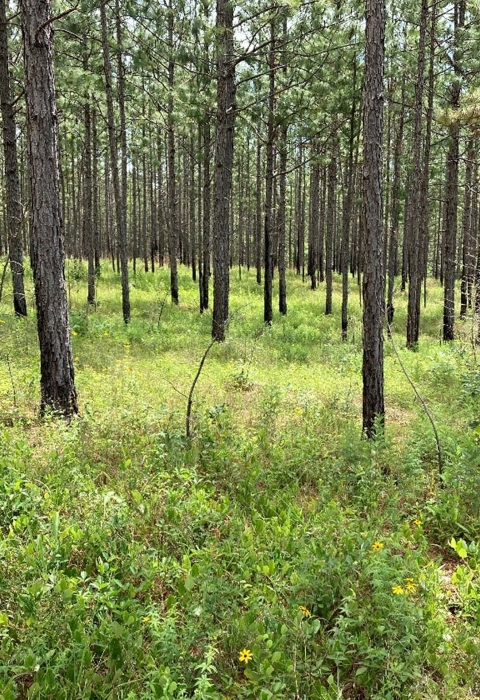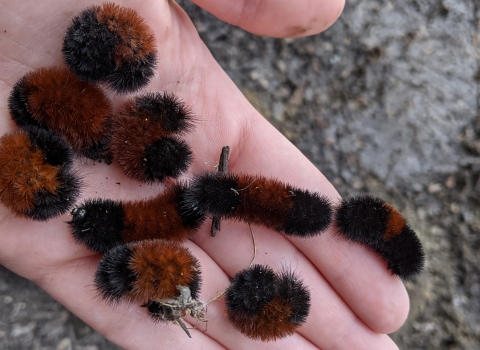Randy Browning was familiar with the privately owned Quail Hollow Ranch long before he joined the U.S. Fish and Wildlife Service’s Partners for Fish and Wildlife program. He’d been a wildlife biologist for the state of Mississippi and knew of the owners’ desire to manage their property for northern bobwhite quail. And that meant longleaf pine, the perfect habitat for the elusive bird, as well as species of great importance to the Service: the gopher tortoise, black pine snake, and eastern diamond back rattlesnake.
The nearly 2,000-acre ranch in Lamar County consists of a mixture of bottomland hardwoods and loblolly pine plantations with a significant amount of both natural and planted longleaf pine. The longleaf, today, is the dominant over-story species covering half of the property.
Browning was most intrigued by a 135-acre longleaf stand planted in the late 1970s. The stand, planted aerially, was extremely dense with basal areas as high as 210 square feet and a patchy, herbaceous understory. Management, until 2003, consisted only of prescribed fire. That year, though, the Service joined Wildlife Mississippi and the American Forest Foundation in thinning the stand. A chainsaw crew targeted trees that averaged less than four inches in diameter at breast height.
The stand survived Hurricane Katrina and her hundred-mile-an-hour winds in 2005. Commercial thinning the following year further reduced the stand’s density. Ever since the landowners, and partners, have managed the stand with repeated prescribed fires, herbicide applications and invasive species invasive species
An invasive species is any plant or animal that has spread or been introduced into a new area where they are, or could, cause harm to the environment, economy, or human, animal, or plant health. Their unwelcome presence can destroy ecosystems and cost millions of dollars.
Learn more about invasive species – cogongrass, feral swine – control. This stand has since become the focal point for conservation field days held on the property.
The owners and partners have continued to improve the habitat of other longleaf pine stands. In 2019, for example, the Service and Wildlife Mississippi targeted understory hardwoods on a naturally regenerated longleaf pine stand that was previously thinned. The following year the Mississippi Partners program undertook a growing season burn on this Quail Hollow stand.
“All of the species closely identified with longleaf pine habitats – the quail, gopher tortoises, black pine snakes, and rattlesnakes – have benefited from the partners’ work,” Browning said. “And it will only get better with time and careful management.”



